Xi'an, May 17: Terra-cotta Warriors of Qin Shi Huang's Army, and Qin Shi Huang's Bronze Chariots
Qin Shi Huang (259-210 BC), unifier and first Emperor of China, was a man much concerned about his afterlife. Work commenced on his mausoleum when he became King of Qin, and continued until his death, employing 700,000 conscripts while he was Emperor. The opulence of his palace tomb (which has not been excavated or opened to this day) and his position as Emperor (which he intended to retain after death) required the protection of an army of 6000 men, crafted in full life size of terra-cotta by artisans who, it is believed, used real soldiers as models. Each one is unique.
Pit Number One
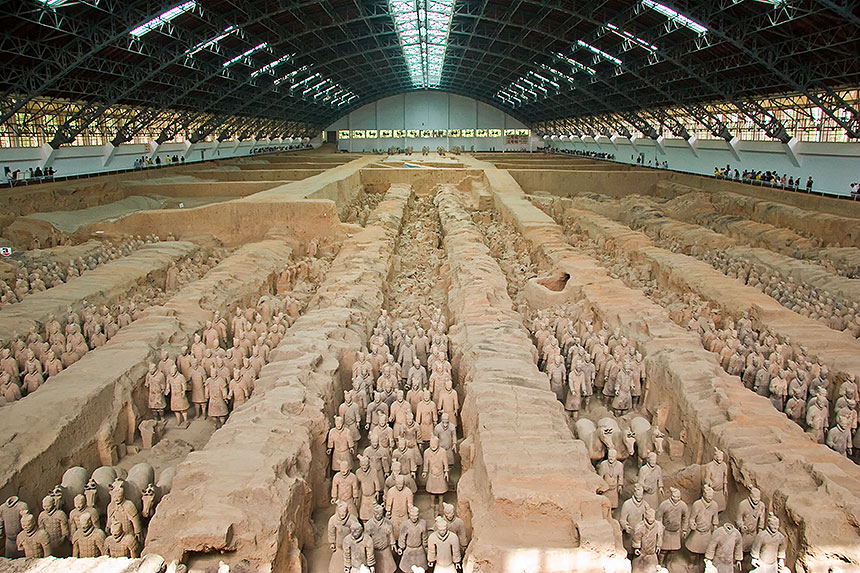
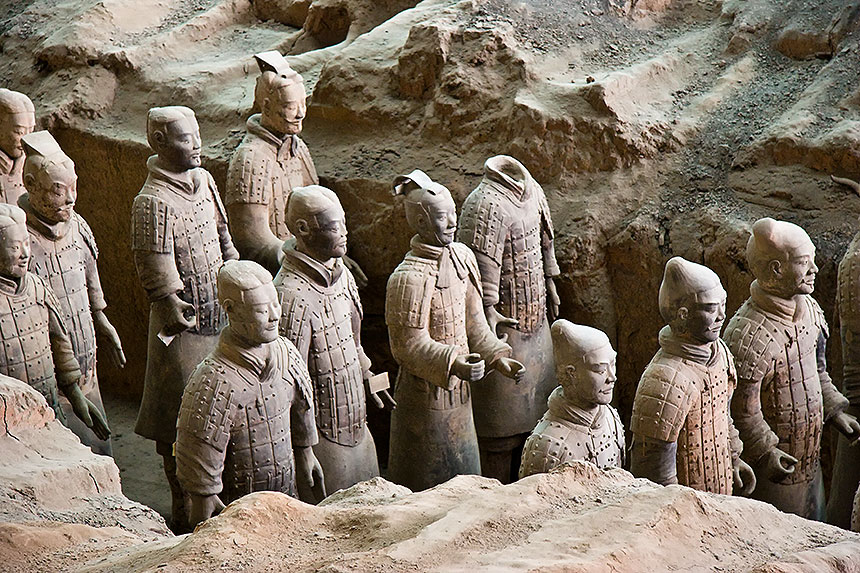
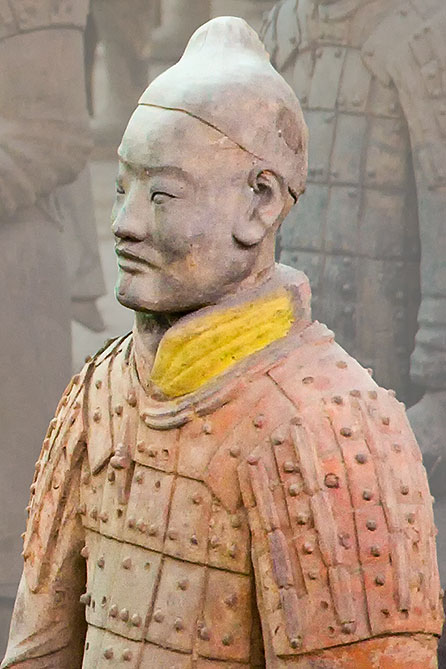
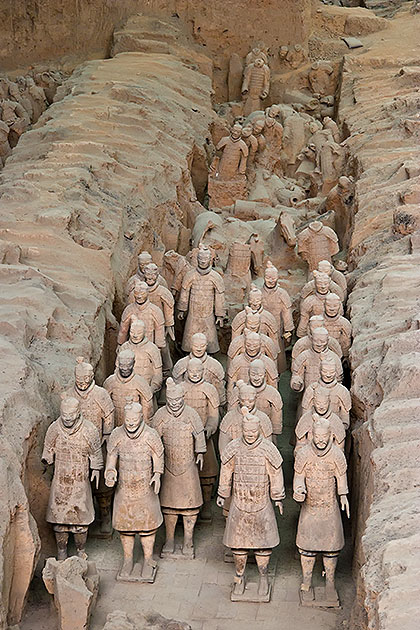

The army is buried in three pits. Pit No. 1 is the largest, containing the main body of the army (shown here). Large buildings have been built over each of the pits to protect them from the elements. The army in Pit No. 1 is arranged in a precise formation of nine main columns (of which six are headed by chariot teams), two side columns, and solid rows of soldiers three deep across the front and back. Most of the warriors are armored (as at left), but those in the front rows and fronts of all nine columns are unarmored (right).
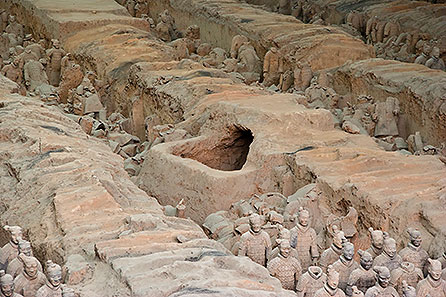
A family tomb was dug at some time in the last 2200 years, presumably without recognition of the significance of its location and surroundings.
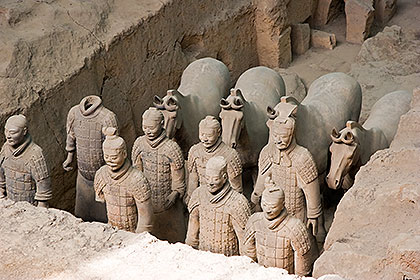
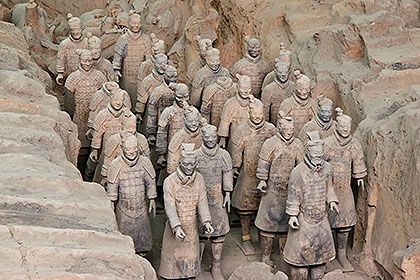
One of the chariot teams (at left). The chariots themselves were made of wood, and decomposed. In the armored group at right, the front two warriors have distinctive caps, perhaps signifying elevated rank.

Above, the front rows of warriors.
After Qin Shi Huang died, disorder broke out in reaction to the heavy-handedness of his regime and that of his successor, Hu Hai. The burial pits of the terra-cotta army were opened; the warriors smashed to pieces; and the wooden timbers holding roofs above them set on fire, causing their collapse. After the figures were discovered in 1974, archaeologists set to work fitting the pieces together to reconstruct the warriors. This work is incomplete, and continues to this time. A large area at the west end of Pit No. 1 is used for this work; it is informally referred to as the “hospital” (right and below). Completed or partially completed figures on display there can be seen in better detail than the ones standing in their proper places.
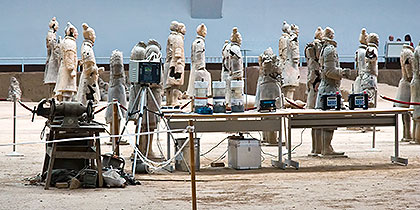
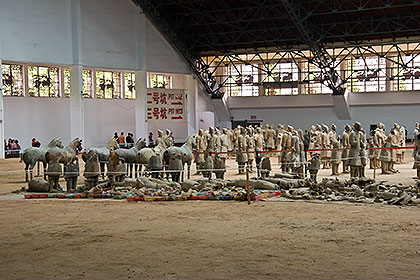
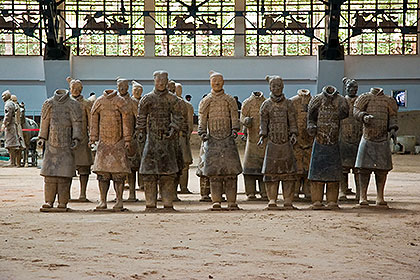
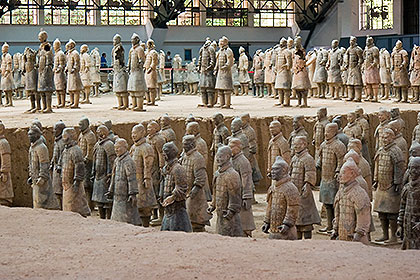
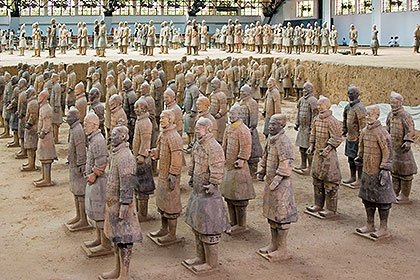
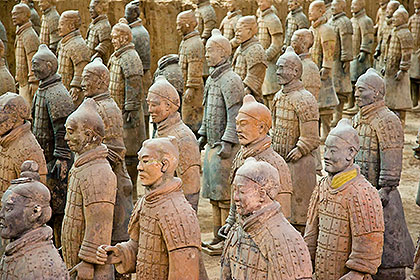
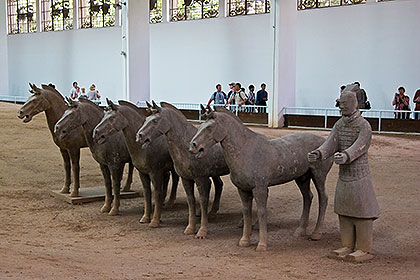
Pit Number Two
Pit No. 2 was discovered a couple of years after Pit No. 1. It is smaller, but has yielded a greater variety of figures, representing a more specialized unit of the army. There were four columns of kneeling armored crossbowmen (162 in all), surrounded by 170 standing crossbowmen. Behind them were about 25 chariots and a variety of figures including officers, chariot drivers, cavalrymen, cavalry horses, armored soldiers and infantrymen. On their right side were eight columns of eight chariots; each chariot was drawn by four horse figures, driven by a chariot driver figure, and accompanied by two additional warriors. Altogether Pit No. 2 contains (or did contain) about 1400 figures and 89 chariots.
Pit No. 2 is only partly excavated, and there is much evidence of ongoing and incomplete archaeological work. A sample of the task faced by the archaeologists can be seen below in a partially excavated portion of the pit. In the photograph at top right, charred remains of the roof can be seen, where it had been burned by the angry mob after Qin Shi Huang’s death.
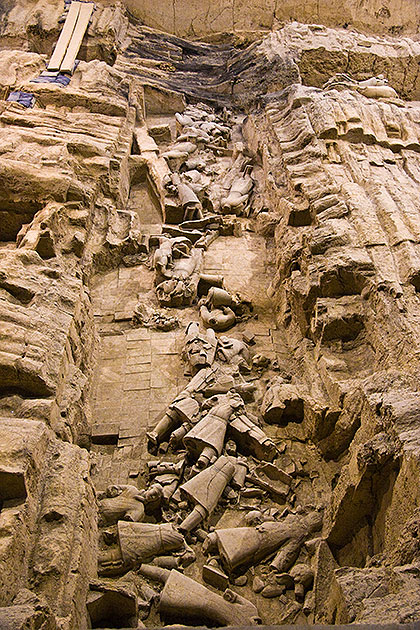
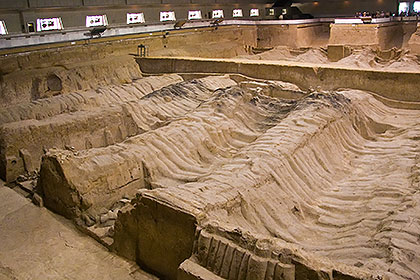

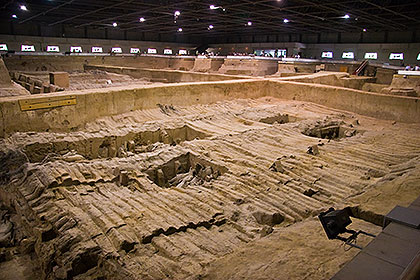
Here are a few of the individual warriors of Qin Shi Huang’s Terra-cotta Army. All are from Pit No. 2; they had been removed to glass cases in an adjacent museum area to make them more accessible for viewing.
The two figures at left and right are officers; the one at left is a middle ranking officer holding a weapon; the higher ranking officer at right is not armed.
At lower left, a kneeling crossbowman; the incredible artistry and craftsmanship of these figures is apparent in the detailing of the sole of his boot, inset. As with all of the figures, the wooden crossbow itself has not survived.
At lower right, a cavalryman with saddled horse; he wears a knee-length robe and armored vest and originally carried a weapon in one hand, and the horse’s reins in the other. The reins were made of stone beads strung on cords, with bronze fittings.
Below, a standing crossbowman, who wears no armor.
Pit Number Three
Pit No. 3 is the smallest of the three. It had a single ornate canopied chariot, bigger than those in the other pits, accompanied by four armored soldiers, and a total of 64 other armored guards. Based on its size, layout, contents, and configuration of warriors, it is believed that this was the army’s command center.
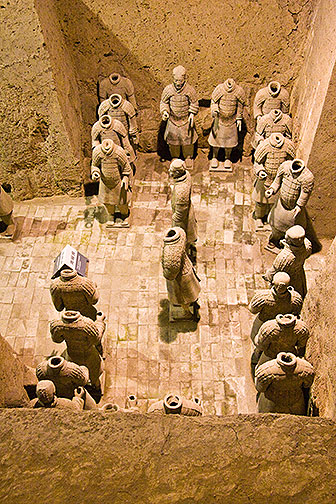
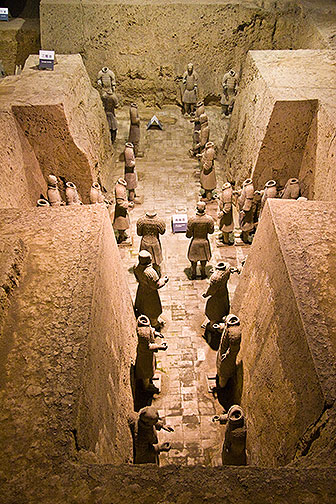

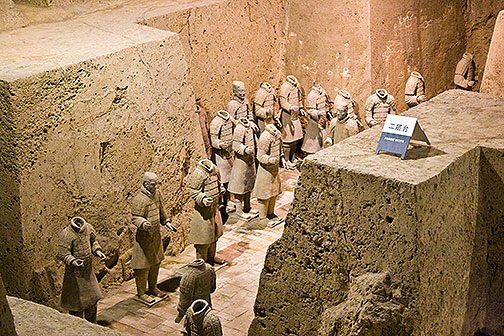
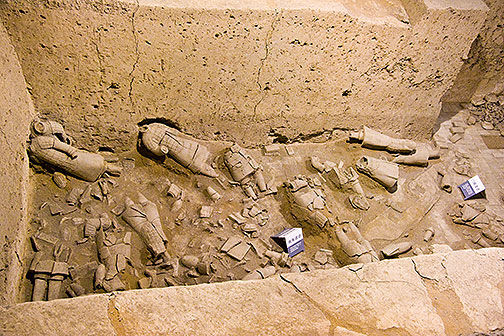
Qin Shi Huang's Bronze Chariots
Two bronze chariots, together with four bronze horses each, were discovered together in a huge wooden coffin (shown in the museum’s picture at right) in 1980. The location was less than 75 feet from Qin Shi Huang’s still-unopened mausoleum. Each of them was made to a scale of half life size. When found, both were broken into many pieces due to collapse of the wooden coffin many centuries earlier. After years of reconstruction, both are now on display in the Exhibition Hall at the location of the Terra-cotta Warriors. One (center) is known as the “front chariot” or “high chariot”, and was intended to protect the second chariot (bottom), known as the “back chariot” or “security chariot” or “Emperor’s Chariot”, which was to carry Qin Shi Huang himself in his afterlife.
Both chariots had extensive gold and silver decorations, and there are many intricate mechanical details such as operating windows and removable horse halters. The umbrella stand on the high chariot is fully articulated with tilt and swivel adjustments. A model of this was being demonstrated to visitors; it is shown at center right.